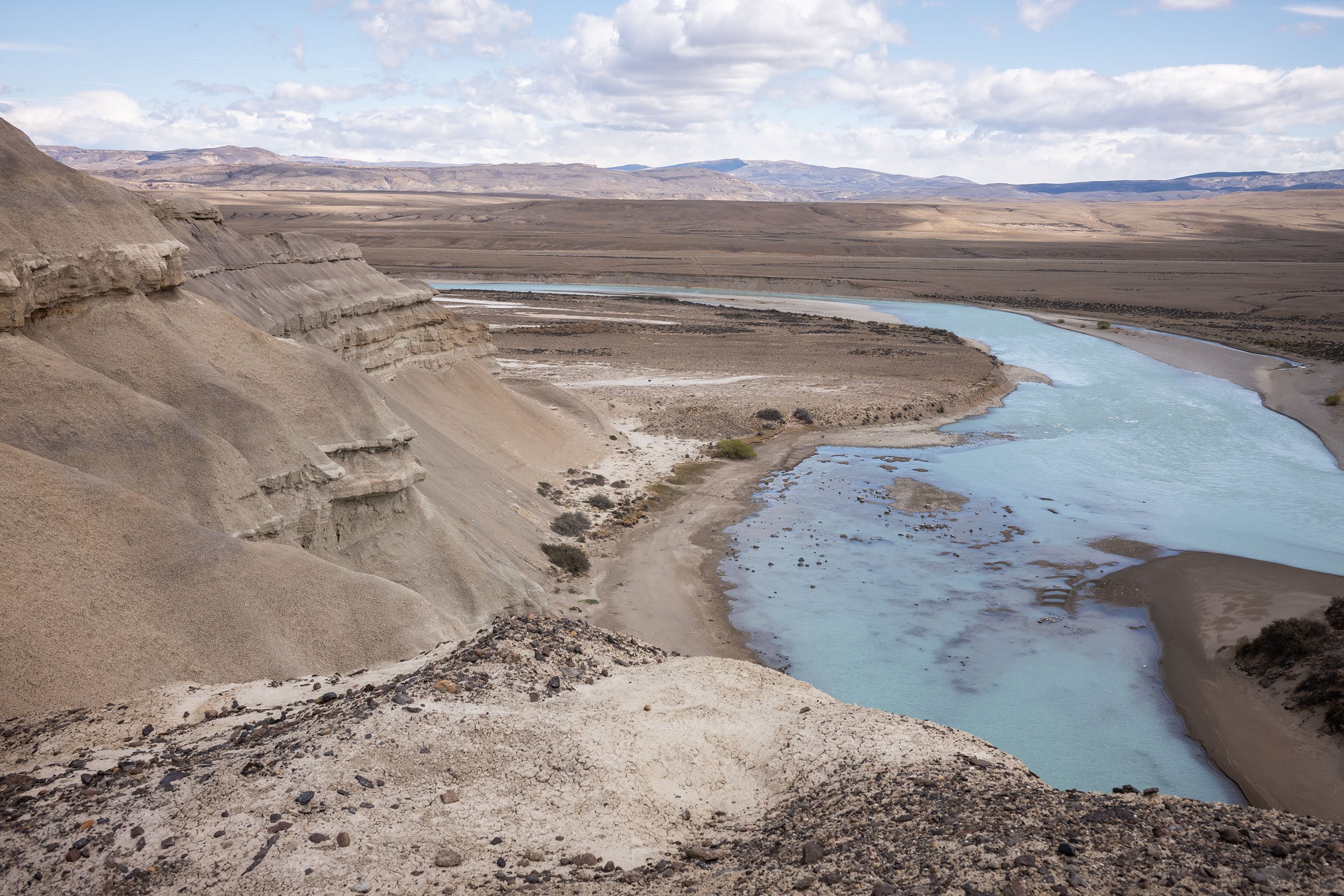
Patagonia: Chapter three
Kayaking down la Leóna.
We drive west out of town before turning north on the fabled Route 40.
Running alongside the Andes Mountains, the road runs the length of Argentine, from Punta Loyola near Rio Gallegos in Santa Cruz Province in the south to La Quiaca in Jujuy Province in the north. Along the way we stop at an overlook to gaze out over the steppe towards Lago Argentina. An iceberg dots the lake, drawing the eye to its sharp white peak on the water.
Along the way, we see guanaco by the road, jumping fences to roam the land.



We stop at a bend in the road by a calm bend in the river. Eduardo and his crew unload the kayaks and Eduardo hands us boots, wet suits, jackets, skirts, and life jackets. He shows us how to put them on and then has us sit in the kayaks on dry land. He demonstrates the proper way to paddle and makes sure we understand the basic mechanics.
I’m paired with a woman from the Philippines who has been living in Norway. She owns her own kayak and is well versed in solo kayaking, though she’s never kayaked in a tandem vessel.
Satisfied with our demonstrations, we help him and his crew bring the kayaks to the water and slip into them for the first leg of our trip.



We kayak a little over an hour, through small rapids and calm stretches, our skirts keeping the kayak dry. Our guides keep us in check, driving us towards certain lines in the river, making sure we keep away from the shore.
All too soon, Eduardo is directing us towards the shore. We paddle the kayaks into a small inlet by the river and pull them out of the water. Changing our clothes, we hang the wetsuits up to dry and prepare to go for a short hike through the mountains.



As we hike towards the hills, Eduardo points to a rhea egg that had been left on the plains. He tell us a puma may have stolen it out of its nest. Nearby, the shells of another egg lay scattered on the ground.
Further on, we pass the bleached bones of another animal, left to dry in the sun.






As we climb into the hills, Eduardo stops and points to some beautiful petrified wood by the side of the path. Just a few steps away he stops us again and pointed out a dinosaur bone that lays half-buried in the ground. He tells us that the largest dinosaur fossil had been found nearby, a brontosaurus that now stands in the Museum of Natural History in New York City.
Occasionally, paleontologists will come to research and excavate new fossils. He also points to the ground we’re standing on and tells us that where we are used to be the sea bed. You can tell because the ground is all packed sediment. He picks up a rock from the ground and shows us fossilized coral.


We climb to the Cerro Hornos viewpoint for its sweeping views of the river. The wind has picked up and blows us back off the precipice. We walk back down a bit and sit in the lee of the hill to have lunch.
I ask Eduardo about kayaking tours. It turns out that the tour is being run by his company, which he started 8 years ago. He also runs six day tours that follow the Santa Cruz River from Lago Argentino all the way to the Atlantic Ocean. I ask him about the proposed dam, and he tells me that it’s a disaster, that the amount of electricity it will generate won’t equal the economic or environmental damage it will do.

On our walk back we walk along the ridge and down the front of the hills. As we reach the plains Eduwardo points up at the sky to two condors who are circling above the mountains where we were.
Back where we left our kayaks, we change back into our wet suits and slide the kayaks back into the river. The wind blows our kayaks towards the shore, and it’s a bit more work to keep them in the middle of the river. As we wind our way back and forth, we can see the van following us along the road.
All too soon, our trip is over. We beach the kayaks and change back into our dry clothes, then continue to help the crew put equipment away. Eduardo opens a cooler and offers everyone a beer and we sit by the side of the river, cheering each other and the trip we have just completed. 🇦🇷





















